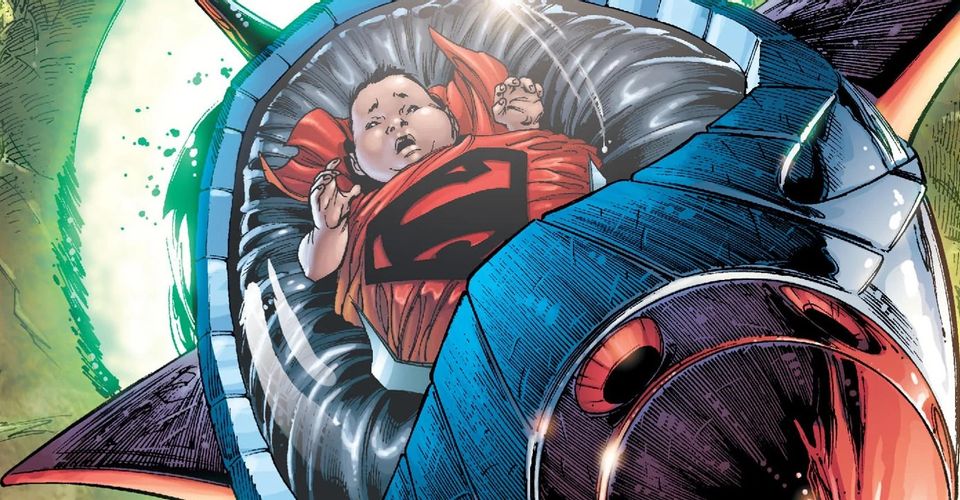Why Superman’s Father Didn’t Build A Ship Big Enough For His Whole Family

By now, pretty much everyone is familiar with Superman’s Kryptonian origin story. Readers know that his father sent him to Earth in a tiny spaceship to avoid the destruction of their world – what’s unclear is why exactly it had to be a tiny spaceship. What was stopping Jor-El from adding a little extra room for himself and his wife? The answer lies in the very beginning of Superman’s story.
Published way back in 1938, Action Comics #1 by Jerry Siegel and Joe Shuster marks the debut of Superman and the beginning of superhero comics as a whole. Despite being his debut issue, Action Comics #1 provides very little information on the Man of Steel’s origin, save for a few panels on the first page. However, one of these panels includes a microscopic detail that has a big impact on the question at hand. The caption reads: “As a distant planet was destroyed by old age, a scientist placed his infant son within a hastily devised space-ship, launching it toward Earth!” The key phrase here is “hastily devised,” which implies that Jor-El simply didn’t have enough time to craft a larger vessel. As a father watching his planet be destroyed, it makes sense that Jor-El’s only desire in his final moments would be to save his newborn son, even if it meant he himself wouldn’t survive. As sound as this logic is, future Superman comics explore this issue even further.
1989’s Action Comics Annual Vol 1 #2 by Jerry Ordway, George Pérez, and Roger Stern delves deeper into Krypton’s history by introducing the Cleric, a religious prophet who amassed a significant following on Planet Krypton thousands of years ago. When the Kryptonian Council began to feel threatened by the Cleric’s influence, they tried to assassinate him, resulting in the Cleric fleeing the planet with his followers. Soon after they fled, however, the Cleric’s Kryptonian disciples all died. As it turned out, all Kryptonians are born with a genetic bond to Krypton itself, which prevents them from leaving the planet. However, Jor-El was able to successfully remove the bond from his son’s DNA, allowing Kal-El to safely travel all the way to Earth. So why couldn’t Jor-El do that to himself? Even if he had, it wouldn’t have made a difference.

Superman/Batman #50 by Michael Green and Mike Johnson focuses less on the Caped Crusader and Man of Steel and more on their fathers. The issue explains the real reason Superman’s father sent him to Earth as opposed to another planet. Years ago, when Martha Wayne was still pregnant with Bruce, she and Thomas witnessed a meteorite crash. When Thomas goes to investigate, his consciousness is teleported to the planet Krypton, where he meets Jor-El. There, Jor-El explains that he is aware of his planet’s impending doom and is searching for a hospitable place to send his baby boy. “After the collapse of our empire, the ruling council banned all interstellar travel,” he says, “I have the means to construct only one ship capable of sustaining life. A ship small enough to escape Krypton’s orbit without the council’s knowledge.” If Kal-El is to have any hope of making it off the planet alive, he needs to be in a ship small enough to avoid detection, leaving room for only one, baby-sized passenger.
Overall, there are three reasons why Jor-El could only save his son, not his whole family: the ship had to be small enough to pass by unseen, the passenger had to be free of their genetic bond to the planet, and there simply wasn’t much time. Had the council taken Jor-El’s warnings more seriously, perhaps he would have been given the resources needed to save more of his kind, but their hubris was their downfall. Perhaps that is another reason Superman’s parents had to die with their planet; in a way, they were also a product of a failed society. As a newborn uninfluenced by their broken system, Superman was Krypton’s last hope not only for survival, but also redemption.
About The Author

















